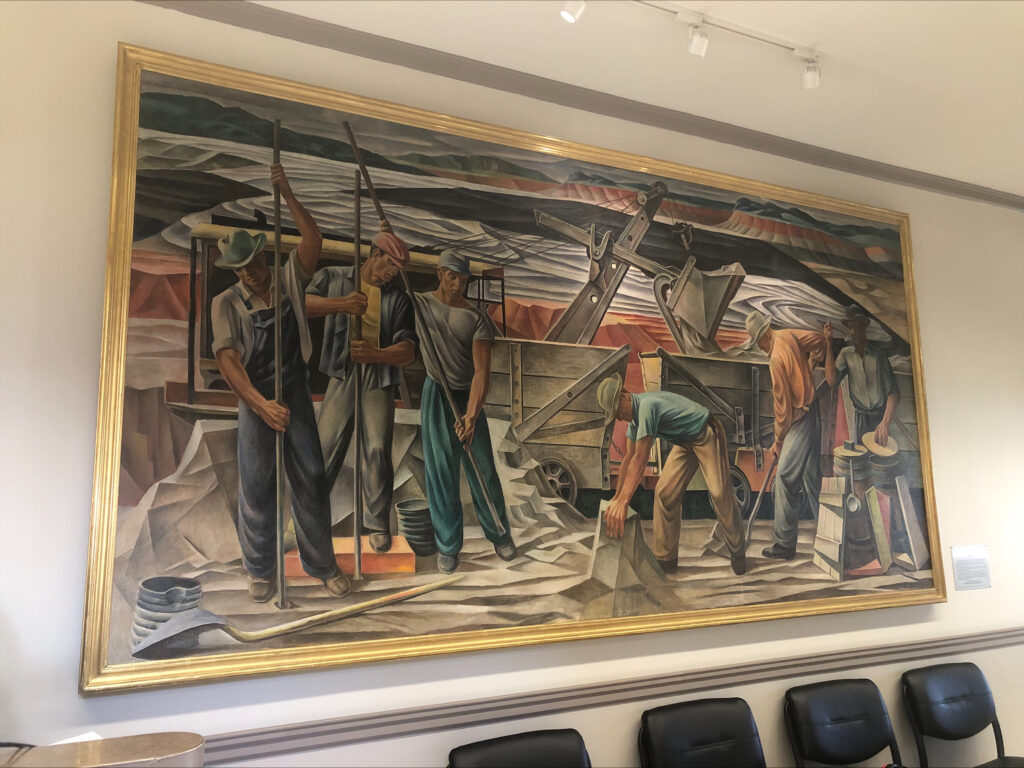WWII in Bauxite, Arkansas
By Cody Berry

In recognition of the 80th anniversary of VE Day on May 8, 2025, I wanted to write about what life was like in Bauxite during the Second World War. Legislation passed during the Great Depression allowed workers to organize, bargain collectively, and to have more control over their employment. Union activity began in Bauxite in the early part of 1941 and that October some Bauxite employees joined the Aluminum Workers of America, C. I. O. Wages before unionization were 45 cents an hour for laborers and 55 cents an hour for foremen. After unionization, laborers were making 55 cents an hour and working conditions were improved. Eventually, in 1949, a retirement program was instituted after a ten-week strike.1
In 1940, there were 896 students going to school in Bauxite. Pine Haven Elementary school was built in 1943. Woodland School was built in the 1943-44 school year for the town’s African American students. The Woodland Housing Project was built south of the town on company property to provide housing for black workers and their families.2 The largest enrollment for Bauxite schools at that time was 1,306 students in the 1944-45 school year. Enrollment remained above 1,000 from then until 1952. After the curtailment of mining operations in 1945 many residents moved from Pine Haven, but the school remained.3
Bauxite had several churches and by 1943 some changes were taking place in its congregations. The Methodist Church was referred to as the “foremen’s church,” and the Baptist church was commonly called the “laboring man’s church.” Workers apparently didn’t want to worship with their foremen, but that practice disappeared by 1945. At that time new foremen had been appointed who were Baptists. Those who still didn’t want to worship with the foremen left the Baptist church altogether. Alcoa furnished housing for the town’s ministers.4
War bonds were sold in Bauxite during WWII. In 1944, an editorial in the Pick and Shovel, the town newspaper, said the company (Alcoa) had exceeded its quota of $85,000 in the Fifth War Loan Drive. Nearly 95% of all employees participated and their purchases through wage deductions to the end of July totaled 15% of the entire payroll at the time.
Production of aluminum for the war effort was cut back by the War Production Board after 1943. At that time the rate of production had risen to 1,100,000 tons.5 The Pick and Shovel advised that the changeover from war production to peacetime production would not be easy and that some workers would be forced to leave.6 The end of WWII was not the end of Bauxite.
Citations:
1 Gordon Scott Bachus, A Printed and Pictorial History of Bauxite, Heritage Publishing: North Little Rock, Arkansas, 1968, 200, 2007, p. 44.
2 Gordon Scott Bachus, A Printed and Pictorial History of Bauxite, Heritage Publishing: North Little Rock, Arkansas, 1968, 200, 2007, p. 42, 44.
3 Gordon Scott Bachus, A Printed and Pictorial History of Bauxite, Heritage Publishing: North Little Rock, Arkansas, 1968, 200, 2007, p. 44-45.
4 Gordon Scott Bachus, A Printed and Pictorial History of Bauxite, Heritage Publishing: North Little Rock, Arkansas, 1968, 200, 2007, p. 45.
5 Gordon Scott Bachus, A Printed and Pictorial History of Bauxite, Heritage Publishing: North Little Rock, Arkansas, 1968, 200, 2007, p. 47.
6 Gordon Scott Bachus, A Printed and Pictorial History of Bauxite, Heritage Publishing: North Little Rock, Arkansas, 1968, 200, 2007, p. 48.
